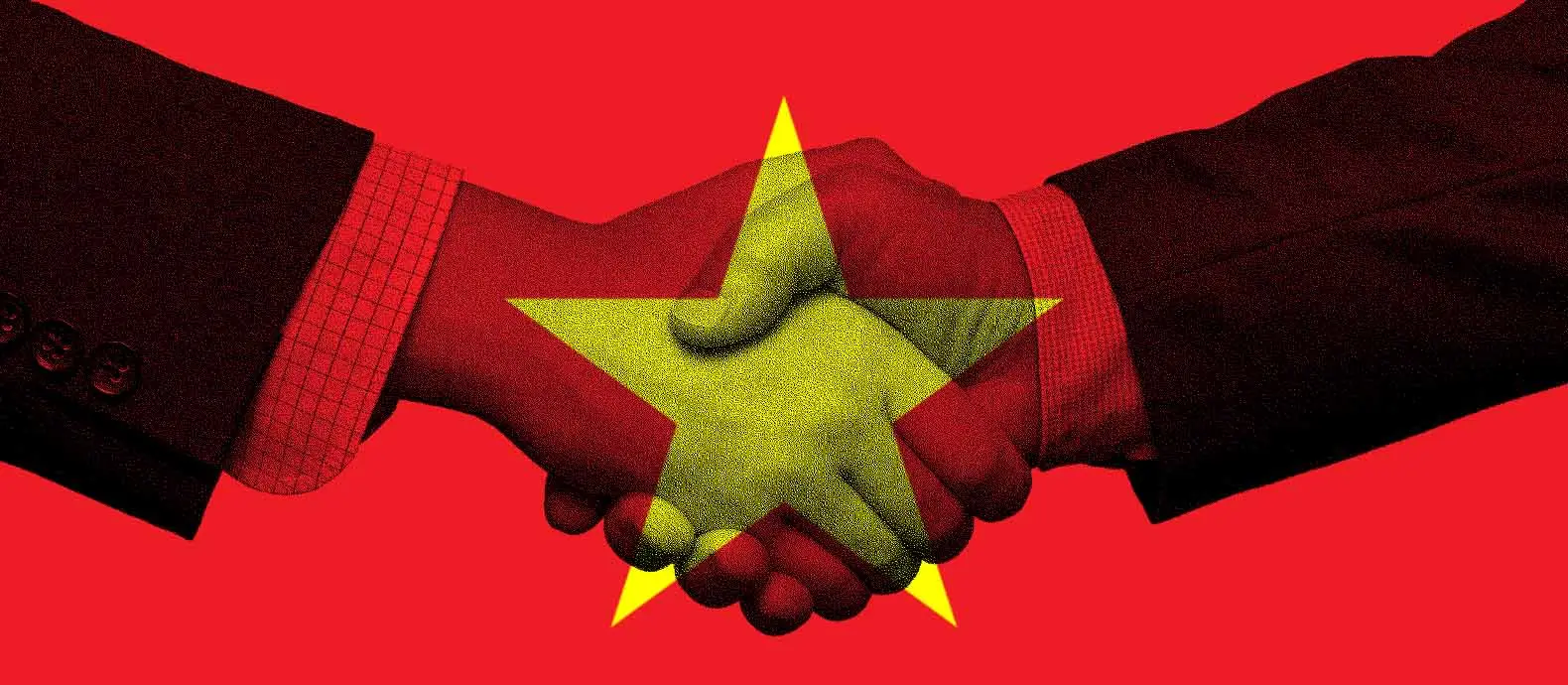China purchasing agents play a pivotal role in the global supply chain, acting as intermediaries between consumers and Chinese sellers and manufacturers. While they offer access to a wide range of products, these agents also present significant risks, particularly when it comes to counterfeiting. Many agents, whether intentionally or not, contribute to the spread of fake goods, which can mislead consumers and harm brand integrity.
As counterfeit products from China continue to flood global markets, understanding how these agents operate is key for brand protection. In this guide, we’ll explore how Chinese purchasing agents contribute to the problem of counterfeiting, and how your brand can safeguard itself against these threats.

What’s a purchasing agent?
Over the past few decades, China has become the world’s leading manufacturer, producing everything from electronics to clothing. And as demand for Chinese-made goods grew, so did the need for local expertise. Enter the purchasing agent.
A purchasing agent in China acts as a middleman that connects international buyers with local sellers and manufacturers. These agents are go-to experts for sourcing products, negotiating prices, and managing logistics, particularly for businesses and individual buyers who are unfamiliar with the Chinese market.
At first, these agents were a useful tool that helped to bridge the language and cultural gaps between Chinese suppliers and foreign companies. However, as the market has evolved, so have the risks associated with these agents – especially concerning counterfeit goods. While legitimate purchasing agents offer simplified entry into China’s vast manufacturing ecosystem, not all agents are created equal. Some are reputable, but others can be a source of counterfeit goods, which leads to significant risks for your brand.
How do Chinese purchasing agents operate?
Chinese purchasing agents operate by using their local networks to connect businesses with the best suppliers for the products they sell. They handle everything from price negotiations to quality inspections, making sure that the product meets business specifications. And while purchasing agents are considered essential by some companies when it comes to navigating China’s massive manufacturing landscape, they also hold considerable power over the supply chain.
While a trusted agent can open doors to high-quality suppliers and smooth logistics, the complexity of China’s supply chain, with its numerous subcontractors and middlemen, can also allow counterfeit goods to slip through unnoticed. This risk is heightened when some agents prioritize profit over quality, opting for cheaper, counterfeit products to increase their margins.
How purchasing agents in China facilitate counterfeiting
The problem of counterfeiting is a big issue in Chinese manufacturing. The scale of production alongside the demand for high-end goods at low prices creates a perfect opportunity for counterfeiters to thrive. Some purchasing agents, who are aware of the high demand for replicas, have become instrumental in this underground market. They use their local knowledge to source counterfeit products that closely copy genuine items, making it difficult for even experienced buyers to detect the fraud. They then sell these on as the ‘real deal’ and bag the profits for themselves.
This is often facilitated by social media, where communities dedicated to “reps” (short for replicas) share detailed guides on how to source and buy these fakes. Sometimes platforms like TikTok and Reddit even recommend specific purchasing agents who are known for their access to high-quality counterfeits.
How to identify high-risk purchasing agents
Knowing how to spot high-risk purchasing agents is important for protecting your brand. A good place to start is by monitoring popular forums and social media platforms where counterfeit products are often discussed. Communities like Reddit’s FashionReps and hashtags like #reptok on TikTok are hotspots for information on where and how to buy fake products.
It is also possible to identify high-risk agents through these forums, which may lead you to Google Sheets where users share links to purchase counterfeits through a Chinese buying agent.
In addition to online research, there are several practical steps brands can take to identify high-risk agents. One approach is to request samples before placing a large order so that you can check the quality of the goods and the authenticity of the supplier.
Strategies for enforcing counterfeit products coming from purchasing agents in China
Protecting your brand from counterfeit goods begins with a proactive enforcement strategy. Start by registering your intellectual property (IP) in China. This is important as it can protect your products and designs against being replicated in this region, acting as your first line of defense against Chinese counterfeits.
Enforcing your brand’s rights in China is challenging as the country’s legal processes are complex. However, it is possible with the right strategy. Working closely with local legal and brand protection experts who understand the nuances of Chinese IP law is key for brands who are at a high risk of becoming the victims of counterfeits.
As well as filing lawsuits against counterfeiters, brands can work with local authorities to conduct raids on factories and warehouses where counterfeit goods are produced or stored. The recent Pandabuy raid, where authorities seized counterfeit goods on a massive scale, is an example of how effective monitoring and enforcement can lead to real-world results and action taken against counterfeiters.
You should also set up online monitoring tools to keep an eye on Chinese marketplaces. Counterfeiters often use these platforms to sell fake goods, which are later distributed by purchasing agents. Advanced algorithms and machine learning tools like Red Points can scan online marketplaces for unauthorized listings of your products or copies of them flagging potential counterfeits for you to review. Red Point’s platform can also track listing patterns, such as repeated use of keywords or images. This helps to identify sellers who consistently try to sell counterfeit goods and means brands can predict where and how counterfeit products might appear.
Red Points can support your efforts with our Brand Protection Solution. It helps you monitor these marketplaces and take speedy action when counterfeit products are detected. Our teams can also provide the evidence needed for offline litigation. This helps you take legal steps to protect your brand and hold counterfeiters accountable in court.
What’s next
The risks posed by China purchasing agents are real, but they are not impossible to beat. By staying vigilant and investing in a combination of online and offline enforcement strategies, your brand can combat fraudulent services and counterfeit products.
Remember that protecting your brand isn’t just about stopping counterfeit goods. It’s also about safeguarding your reputation and making sure that your customers receive the genuine products that they trust. This will help to protect your revenue, your brand reputation, and the loyalty of your followers.
Ready to take the next step in brand protection? Request a demo of our Brand Protection Solution today and find out how we can help you stay one step ahead of counterfeiters.








